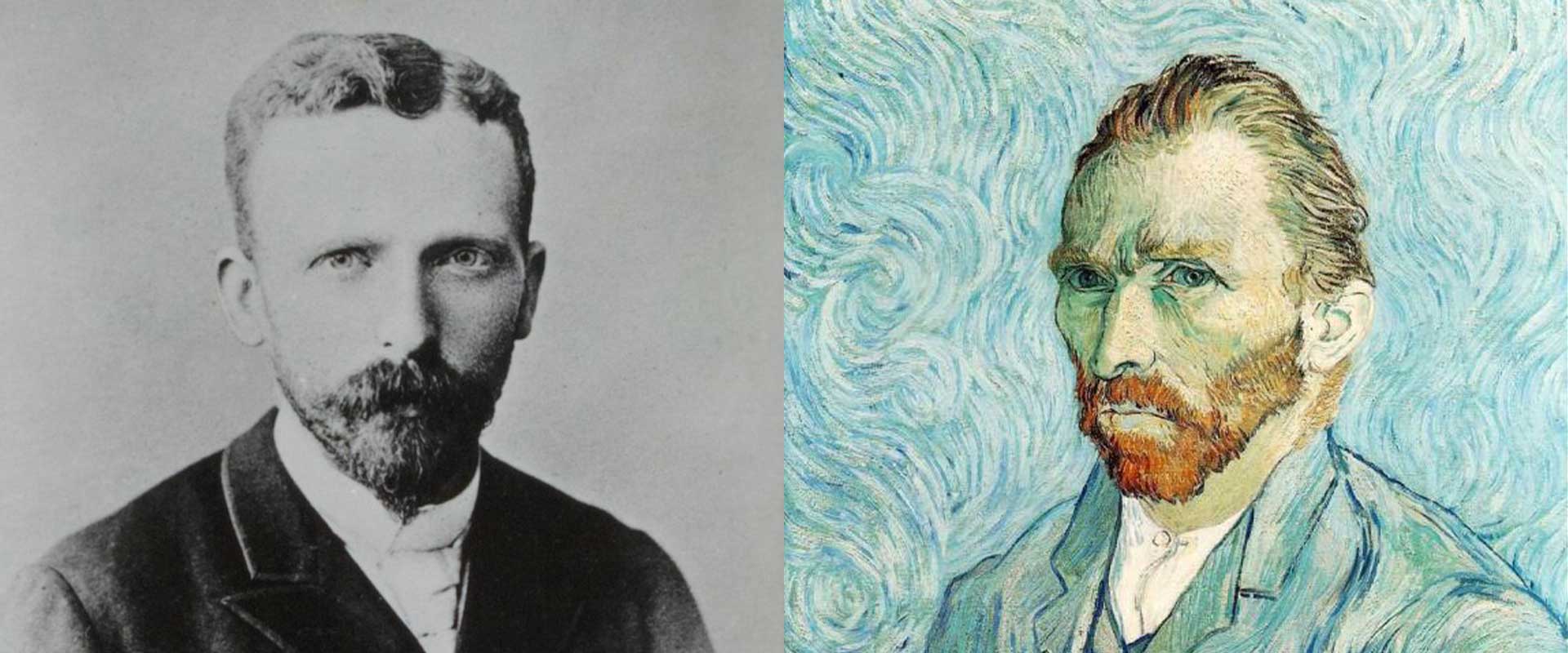Behind every masterpiece is a story—but behind Vincent van Gogh, there’s also a brother. While Vincent’s name is known around the world, Theo van Gogh remains a quieter figure in the background. Yet without Theo’s unwavering belief, emotional support, and financial assistance, the world may never have seen the swirls of Starry Night or the golden brilliance of Sunflowers.
This is more than just a tale of family—it’s a story of love, sacrifice, and a bond so strong it changed the course of modern art. Through hundreds of heartfelt letters and shared dreams, Vincent and Theo’s relationship is one of the most moving and essential stories in art history.
Who Was Theo van Gogh?
Theo was four years younger than Vincent and worked as an art dealer in Paris, surrounded by the avant-garde movement that would shape art history. While Vincent battled poverty and mental illness, Theo maintained a career in the art world and consistently sent money, encouragement, and connections to help his brother survive and paint.
“What am I in the eyes of most people—a nonentity, an eccentric, or an unpleasant person? … I want to show by my work what such an eccentric, such a nobody, has in his heart.”
— Vincent van Gogh to Theo
Theo wasn’t just a benefactor—he was Vincent’s mirror, advocate, and lifeline.
A Relationship Built on Letters
The relationship between Vincent and Theo is preserved through over 650 letters that offer a raw and unfiltered view of Vincent’s emotional world. These weren’t casual updates; they were long, poetic, philosophical documents—filled with art critiques, personal struggles, and the joys of small moments.
In fact, much of what we know about Van Gogh’s life comes directly from these letters. They capture:
- Vincent’s inner turmoil and triumphs
- Detailed descriptions of paintings in progress
- His experiments with color and brushwork
- Personal reflections on faith, love, and loneliness
You can feel the emotion of those letters come alive in our Vincent van Gogh Wall Art Prints, which reflect the heart of an artist in constant communication with someone who truly understood him.
Theo: Financial and Emotional Backbone
Vincent struggled financially his entire life. He rarely sold work and was often on the brink of destitution. But Theo ensured that Vincent always had paints, brushes, and a roof over his head. Even when Vincent was too unwell to paint or write, Theo sent care packages and encouragement.
Theo’s support included:
- Paying Vincent’s rent and asylum stays
- Funding moves to Arles, Saint-Rémy, and Auvers
- Introducing Vincent to other artists like Pissarro, Gauguin, and Seurat
- Promoting his work to critics and dealers, even when no one showed interest
Theo’s patience and love allowed Vincent to create without limits, even in the darkest moments of his life.
The Dream of Arles and the Yellow House
In 1888, Vincent moved to Arles in southern France, imagining it as a vibrant artist colony. He painted the now-iconic Bedroom in Arles and Sunflowers, hopeful about a new chapter. Theo not only funded this dream but encouraged Paul Gauguin to join him.
Unfortunately, Gauguin and Vincent clashed. Their friendship ended with the infamous ear-cutting incident, a breakdown that sent Vincent spiraling. Yet even through the chaos, Theo never abandoned him.
This creative and emotional turning point is echoed in expressive works like those found in our Expressionist Wall Art Prints collection—bold, emotional, and full of movement.
Final Months: Tragedy and Farewell
In May 1890, Vincent moved to Auvers-sur-Oise, where he painted over 70 works in just two months. Despite being outwardly productive, he was inwardly fragile.
On July 27, he shot himself in the chest and died two days later in his rented room, with Theo at his side. His last words were reportedly:
“La tristesse durera toujours” — “The sadness will last forever.”
Theo, heartbroken and physically ailing, died just six months later, in January 1891. The brothers, so inseparable in life, became inseparable in death.
Together Forever: A Shared Grave in Auvers
Originally buried apart, Theo’s body was later exhumed and reburied next to Vincent’s in Auvers-sur-Oise. Today, two modest gravestones, side by side, mark their eternal bond.
“He lived for his brother and died shortly after him.” — Inscription on Theo’s grave
Their graves are visited by thousands each year—not just to honor an artist, but to honor a brotherhood that redefined devotion and belief.
Preserving the Legacy: Johanna van Gogh-Bonger
After Theo’s death, his wife Johanna took it upon herself to preserve and publish Vincent’s letters. She also organized exhibitions, promoted his work, and made sure the world understood the brilliance her husband had supported.
Thanks to her, the world discovered the real Vincent van Gogh, not as a madman, but as a visionary—shaped by love and brotherhood.
Their Bond Changed Art History
Without Theo, we might not know the name Vincent van Gogh. Without Vincent, Theo’s belief would have had no masterpiece to protect. Together, they represent one of the most powerful partnerships in art—a creative and emotional alliance that continues to inspire artists, writers, and dreamers.
You can celebrate this emotional and artistic legacy with works from our Vincent van Gogh Wall Art Prints or explore similarly expressive collections like Color Field Wall Art Prints.
Conclusion: A Love That Painted the World
The story of Vincent and Theo van Gogh is one of love, loyalty, and the unbreakable power of belief. Theo didn’t just support Vincent—he believed in him when no one else did, when galleries rejected him, when madness overtook him, and even when Vincent had given up on himself.
Their letters remain among the most moving documents in art history. Their shared dream—to create, to connect, to endure—lives on in every sunflower, every star, every brushstroke.
Their bond didn’t just sustain a brotherhood. It changed the way the world sees art—and the artist.





